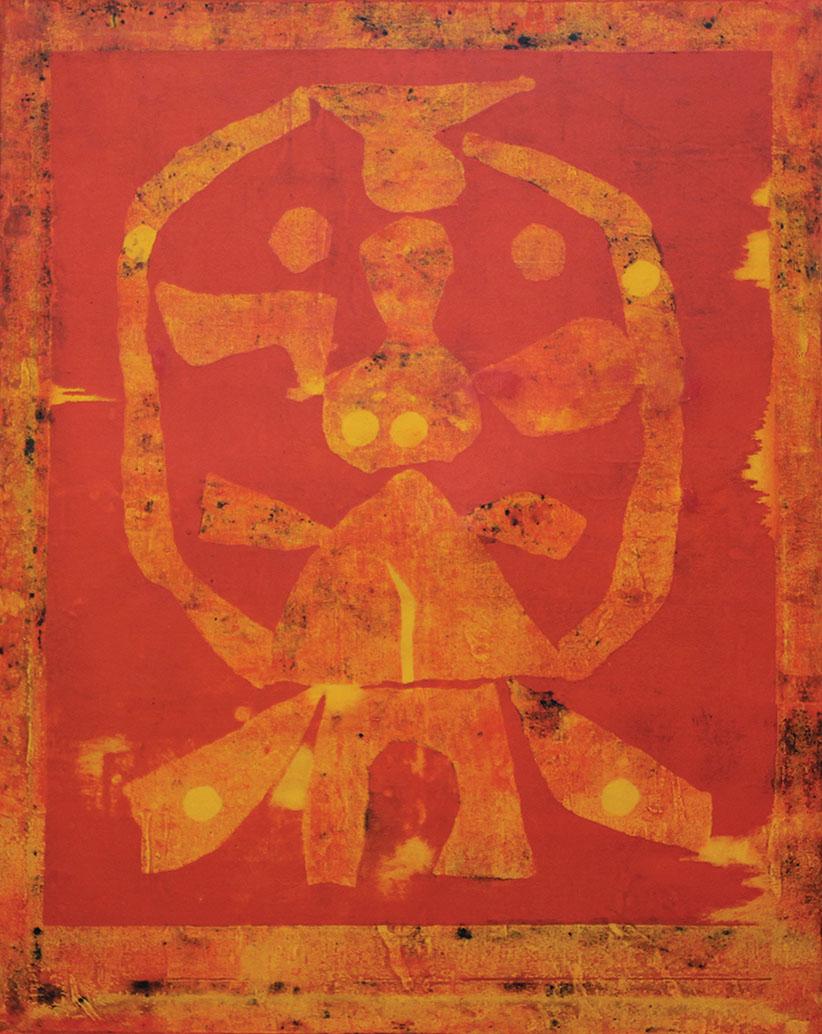THE LONG-ANTICIPATED Vasudeo Santu Gaitonde (1924-2001) retrospective opened at the Solomon R Guggenheim Museum on 24 October. Between both public and private collections, a total of 45 paintings and works on paper spanning 40 years of VS Gaitonde’s career are on display, including some never before publicly showcased.
First Solo Exhibition
Although Gaitonde is held in the collections of the Hermitage in Saint Petersburg, Russia; Lalit Kala Akademi and the National Gallery of Modern Art in New Delhi, the Philadelphia Museum of Art and other institutions across India, the US and Japan, this is the artist’s first-ever solo museum exhibition.
Art by VS Gaitonde deviates from typical historical arcs, duly defying and distributing across categories. He meticulously produced a very small number of canvases, focusing on each individual work carefully and calculatedly to achieve his ideal artistic expressions.
First and foremost revered as a Non-objective artist and a Modernist bi-proxy, he is nevertheless grouped into the art historical oeuvres of the Bombay Progressives, with ties to variant forms of Expressionism in the West. Adjunct Curator Sandhini Poddar, who is overseeing the exhibition and is well known for her exhibition Being Singular Plural: Moving Images from India held at Deutsche Guggenheim in Berlin, which focused on individual relationships to the greater social identity. It is relevant both to the Indian art identity and the Guggenheim Museum’s roots in non-objectivity that Poddar has chosen to hone in on someone so particularly individualised and recognised.
As is the case with so many artists, VS Gaitonde was known to be like his paintings: a quiet and independent personality, a humble and unsentimental teacher, focused on the greater relationships rather than pathos. ‘Gai’, as his friends called him, was born in 1924 and studied at the Sir JJ School of Art in the 1940s, staying on as a fellow until 1950.
His technical process was esteemed even from his earliest artistic ventures and collected by well-respected scientist Homi Jehangir Bhabha (1909-1966) in the 1950s, receiving accolades during the 1957 Young Asian Artists’ Exhibition in Tokyo. Almost simultaneously in 1956, his work toured Eastern Europe in an Indian art group exhibition.
Drew Inspiration from Linear Strokes and Shapes of Paul Klee
During this initial growth, VS Gaitonde drew inspiration from the linear strokes and shapes of Paul Klee in mixed media and watercolour. According to some of his writings in the late 50s, he modestly added that Klee’s small canvases were conducive to working in his parents’ home. In an unfortunate coincidence some 30 years later, Gaitonde was injured in a 1984 car accident that forced him to return to making smaller canvases from 1985 to 1987.
In its initial incarnation, the small 1950s works inspired by Klee are clearly blocked and representational. In the 1955 painting, the colour contrasts and figurative depictions are much more literal than later works, with a woman in a white dress leaning into a darker man. The work is in the collection of a family divided between Vienna and Mumbai, speaking to its relevance in the Abstract Expressionist trajectory of pre-war expressionism in Vienna and Berlin as much as the post-war school of Bombay and New Delhi.
VS Gaitonde eventually delved deeper into abstracted thematic elements of imagination and fantasy. He was well received in New York at Graham Gallery in 1959 and Gallery 63 in 1963, and through a grant from the Asia Society, was able to travel from New York to East Asia in 1964.
VS Gaitonde Began Working with a Palette Knife
Shortly thereafter, he began working with a palette knife and a roller. Many more of his more celebrated images followed in the 1960s and 70s, that explore the infinite. By 1971, he was awarded the prestigious Padma Shri award by the Government of India, and moved to New Delhi. He lived in the area until his death in Gurgaon in 2001.
The diverse connections to his work are extensive: scholars have paralleled his interests in colour to Indian miniature court paintings, meditation in Zen Buddhism, sharp strokes in hanging scrolls, calligraphy and ink paintings, detail in Sol Lewitt, and passion in Abstract Expressionism, Art Informel and Taschisme. Gaitonde has even drawn parallels to the Rorschach tests, designed to measure disordered thoughts.
The Rorschach Tests
The Rorschach tests were derived from inkblots in 1921. Based on the shapes and logical brain delineations, the results of associations have been commonly used to determine bipolar, or schizophrenic, diagnoses. Reviewing the abstracted and multi-layered shapes of Gaitonde’s later works (specifically, untitled paintings from 1974 and 1989), the emergence of similar relationships is revealed. To achieve the similar effect of peeking translucent colours, Gaitonde scraped and reapplied different colours, creating a horizon on the linear plane.
Former Christie’s international director of Asian Art, Hugo Weihe, described Gaitonde as India’s [Mark] Rothko, just as MF Husain was acclaimed as the ‘Picasso of India.’ In a 1963 work, the colour-blocking and ombre along the corners is evidentiary, but overall these multitudes of juxtapositions are ultimately indicative of the artistry’s sophistication. This undeniably unprecedented originality has equated to staggering auction results.
VS Gaitonde Sought-After at Auctions
A consistent staple of auctions at Sotheby’s and Christie’s, his 1979 Untitled set the record for any Indian artist at auction at US$3.8 million (IR 237 million) in 2013. Although the auction was the first for Christie’s in Mumbai, the painting was purchased by an anonymous American collector and is on view at this Guggenheim showcase. Many of the exhibited works are held in largely Indian-based collections.
BY ALEXANDRA BREGMAN
VS Gaitonde: Painting as Process, Painting as Life, to 11 February 2015, at Solomon R Guggenheim Museum, New York, www.guggenheim.org. Catalogue available.

